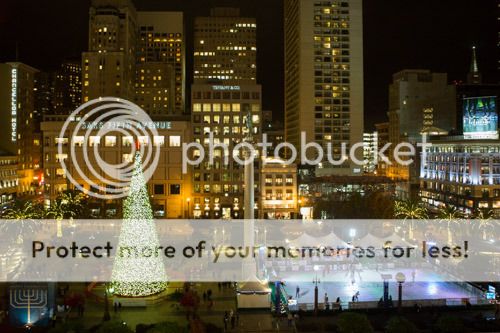
Whom Do You Know That Might Benefit From Our Tailored Mortgage Solutions?
Cheers,

Author of "The Mortgage Game"

Whom Do You Know That Might Benefit From Our Tailored Mortgage Solutions?
Cheers,


Growing up in Riga, Latvia we did not celebrate Hanukkah or Christmas. Instead, we celebrated the New Year, and decorated a fir tree similarly to how people decorate their Christmas trees. The custom of tree decoration actually has pagan roots. It evolved in Germany in the 16th century, and became popular beyond Germany during the second half of the 19th century. Many people enjoy the spirit of the winter holiday season; there are so many wonderful holidays, celebrated by different religions and traditions, such as Hanukkah, also known as the Festival of Lights, Christmas, which is lighted by light and Kwanzaa, which honors African heritage in African-American culture and uses seven-branched candle holder Kinara to commemorate this holiday tradition.
As in the Hanukkah song “The light dispels darkness, the light is everywhere. ”. Whichever tradition you celebrate, fill your life with light.

Whom Do You Know That Might Benefit From Our Tailored Mortgage Solutions?
Cheers,


The idea to write about bread came after listening to Michael Pollan’s audiobook about food titled, “Cooked”. My first encounter with his food writing began with his book, “Second Nature: A Gardner’s Education”, that he wrote in 2003. On Amazon I counted twelve titles of his books related to food. Michael also narrates all his books. For someone like me, who does not know how to cook and is surrounded by women (my wife and daughters) who know quite a bit about food (My youngest daughter Tamar has a food blog and web series called Healthy Delactable), it might be strange to be interested in the subject of cooking. The basis of Mr. Pollan’s stories, as they are presented in his introduction, are “discoveries of enduring power of the four classical elements – fire, water, air and earth – to transform the stuff of nature into delicious things to eat and drink.” He does it by experimenting in his own kitchen, as well as by apprenticing with a succession of culinary masters. In North Carolina, he learned and helped a barbeque pit master use fire to prepare a barbequed pig. Berkeley’s famous restaurant, Chez Panisse trained Pollan in the art of braising. The celebrated baker of San Francisco based Tartine Bakery taught him about how air transforms grain and water into a fragrant loaf of bread. And finally I learned about how fungi and bacteria can actually contribute to our health and well being. You may wonder why someone, like me, who does not eat meat or fowl, is interested in the meat preparation. To make matters more perplexing, I also recently stopped eating bread to help my body to become lighter (in which I succeeded). My answer is that Mr. Pollan knows how to tell a good story. For me, the most fascinated part of the book was related to bread. Growing up in Latvia, bread was part of our everyday diet (though there was not much to choose from). It was enough to become hooked, which seems is not only a problem in Latvia. To give you perspective, according to the Bread Production market research, in the United States in June 2015 the revenue of the bread production was $42 Billion dollars, employing 222,980 people in 24,642 businesses.
Luckily for San Franciscans, we have many choices for good artisanal breads. Besides Tartine Bakery, we have Acme Bread in Berkeley (this is my wife’s favorite bread company). A few years ago, The Mill opened on Divisadero Street. I found a list of the 10 Best Bakeries in the Mission Area alone, on Yelp. You can buy very tasty bread at Outerlands Restaurant and at Twentieth Century Café. And of course, at many farmers markets in the city and Bay Area. Whatever you eat, read (or listen to) “Cooked”, and enjoy your food.

P.S. I was introduced to the bread making process a few years ago. Tamar’s best friend’s father is Mick Sopko, a well-known baker from the famous Tassajara Bakery, which is part of the Zen Green Gulch community in Marin County. As you know, bread comes in different shapes and sizes. I photographed Mick’s production of his small breads. On another occasion I was present when a single loaf was ready for baking at the Twentieth Century Café. Before quitting my bread habit, I enjoyed going to the Ferry Building farmers market for sandwiches made from Acme Bread.
Bon appétit!
Enjoy and Share!
.
Do Not Keep Me As A Secret!
Smile And Please SHARE It With A Friend!
Cheers,


Whom Do You Know That Might Benefit From Our Tailored Mortgage Solutions?
Cheers,


Whom Do You Know That Might Benefit From Our Tailored Mortgage Solutions?
Cheers,


The title and quotations of this story came from a book about photography, “It’s Not About the F-Stop”, written by one of my teachers, Jay Maisel. The F-stop is the function of the camera that controls the amount of light that comes through the lens. In the book, he quotes a Tibetan proverb, “Objects are there for you only if you see them.” And then he continues with the quote by photographer Barbara Bordnick, “We walk by wonders every day and don’t see them. We only stop at what shouts the loudest.”
The Pilgrims were puritans and followed strict rules. However it turned out, the reasons for the fast were not exactly religious. Ken Albala continues:
“The original logic (to abstain from meat, eggs and dairy products) was purely medical — these were considered the most nutritious foods available, which would generate a plethora of blood and sperm (in both men and women), which would in turn stimulate the libido and lead to sin. Only humorally cold and moist vegetables, salads and fish were suitable foods to restrain lust.” So what shall we do now that we know the truth?

I participated in Jay Maisel’s workshop many years ago. Since then, I’ve purchased many of his photography books. The latest one, I’ve been reading a page a day, after I meditate. In this experience, I realized that the qualities of being a good mortgage broker and a good photographer are actually very similar. And I think the number one quality is being present. Every time I meet with and try to help a new or a repeat client, first I have to fully understand their circumstances, concerns, limitations, desires, and only then think about the possible solutions. To paraphrase Jay Maisel, “It is not about the interest rate”. Being a good photographer is more challenging – there are so many components to consider to get satisfying results. And even then, how can I know if the result is a good image? This is why I immerse myself into looking at the work of other photographers and art in general, to train myself to sense, rather than just see what a good image is. However a true professional cannot do things alone. I remember that at the beginning of a workshop, Joe asked us how we know that we have a good image. My response was that I know it’s good when my wife likes it. When I work on the final touches and cropping the images, Elfa’s suggestions help me a great deal.
Not surprisingly, the same goes with mortgages. Regardless of which solution or lender I find for each client, it is my underwriters, Mila and Sarah, who make the final cut. But the question still remains, how does one notice and recognize the right opportunity, the right light, the right place, the right subject or the right lender? I think that thorough preparation and a lot of practice helps to recognize the beauty in ordinary things and the small details that make or break a mortgage. There is a Russian saying, “Na lovtsa i zver’ bezhit”, which translates to, “Prey runs into the hunter”. But first, the person needs to know what it takes to be a hunter, a photographer or a mortgage professional. Then one needs to be in the place where one can meet the prey (the solution). I learned this from another photography teacher, Sam Abell: “First you choose the background and wait for the subject to appear in front of the camera.” After a while, what seems like an ordinary thing, is suddenly illuminated and miraculously transformed, or a lender “appears” with the program that the client is waiting for. The rest is simple – you just need to capture the moment.
P.S. In choosing the images for this story, I decided to show you some ordinary objects, perhaps in a way you may not have noticed before.
Enjoy and share
Do Not Keep Me As A Secret!
Smile And Please SHARE It With A Friend!
Cheers,


Whom Do You Know That Might Benefit From Our Tailored Mortgage Solutions?
Cheers,
